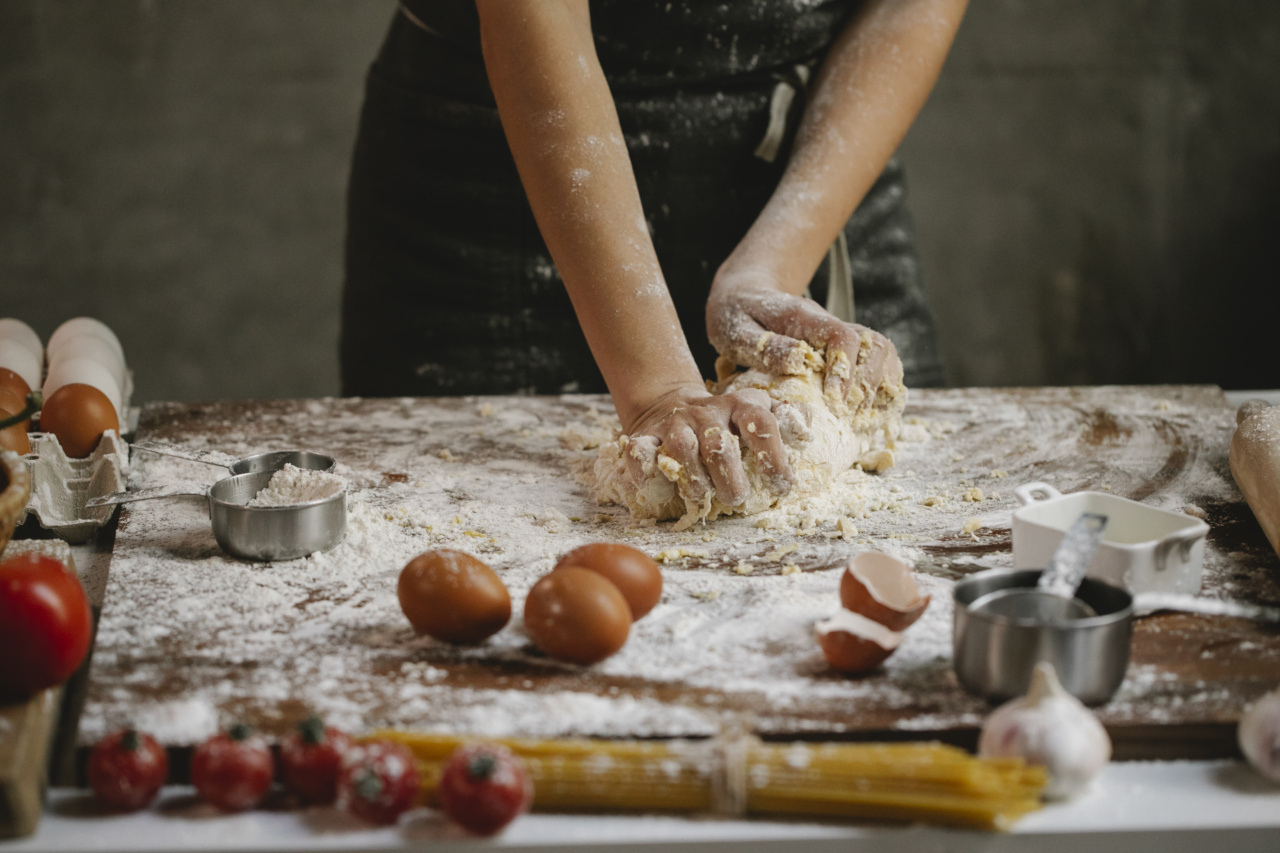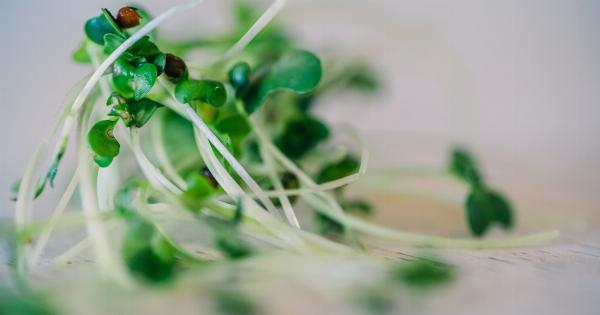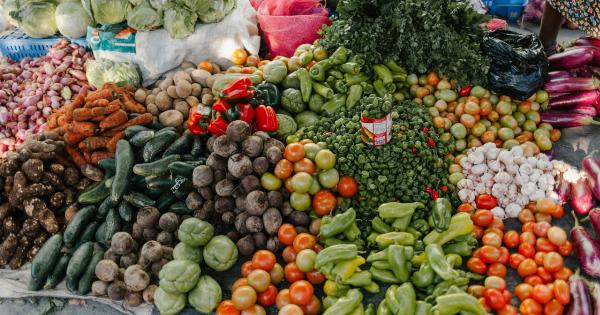Tomatoes are one of the most popular plants grown in home gardens. They’re easy to grow, don’t take much space, and produce a bountiful harvest.
However, many people make the same mistake when it comes to growing tomatoes, which can result in a poor yield and unhealthy plants. In this article, we will explore the biggest mistake people make with their tomato plants and how to avoid it.
1. Not Providing Enough Space
Tomatoes are a vine plant that needs space to grow and spread out. One of the most common mistakes people make is not providing enough space for the plants.
This means that the plants don’t have enough room to grow, and they become overcrowded, leading to stunted growth and a poor harvest. When planting tomatoes, it’s essential to provide enough space between plants. Each plant should be at least 18-24 inches apart, depending on the variety.
This spacing ensures that the plants have enough room to grow and access essential nutrients, water, and sunlight.
2. Not Pruning
Tomatoes are prolific growers, and without proper pruning, they can become wild and unruly. Not pruning the plants can lead to an overgrowth of foliage, which can cause a lack of airflow, leading to fungal diseases like blight.
Additionally, a large number of leaves can also shade the fruit, preventing them from ripening correctly and leading to a poor yield. When pruning tomato plants, remove the lower leaves up to the first flower to encourage growth upwards. Remove any suckers that grow between the stem and the branch to limit growth sideways.
This will ensure that the plant doesn’t become too bushy and has enough airflow to stay healthy.
3. Not Providing the Right Support
Tomatoes are heavy plants that need proper support to avoid bending or breaking. Without the right support, the plants can become damaged and stunted, leading to a poor harvest. When choosing support for your tomato plants, consider the variety.
Certain varieties of tomatoes, like the indeterminate variety, can grow up to six feet tall and require sturdier support like a tomato cage or trellis. In contrast, determinate tomatoes are bush-like and don’t need as much support. Without the proper support, the weight of the fruit can cause the branches to break, and the plant to become damaged.
4. Overwatering
Many gardeners make the mistake of overwatering their tomato plants. While tomatoes need water to grow and produce fruit, overwatering can cause more harm than good. Overwatering can lead to root rot, which can damage the plant and inhibit growth.
Additionally, overwatering can lead to a lack of oxygen in the soil, leading to an unhealthy plant. When watering your tomato plants, it’s important to provide enough water to moisten the soil but not to soak it. Water deeply but infrequently, ensuring that the plants get enough water without drowning them.
5. Planting Too Early
Tomatoes are a warm-season crop, and planting them too early in the season can result in poor growth and yield. When the soil is too cold, the plants can become stunted and take longer to bear fruit.
It’s essential to wait until the soil has warmed up before planting your tomato plants. Typically, this is in late spring, after the danger of frost has passed. Additionally, it’s important to choose varieties that are suitable for your climate and planting zone.
Choosing the right variety will ensure that the plants thrive and produce a bountiful harvest.
6. Not Fertilizing
Tomatoes are heavy feeders that require adequate nutrition to grow and produce fruit. Not fertilizing your tomato plants can lead to stunted growth and a poor harvest.
However, fertilizing too much can also cause problems, leading to weak plants and a higher risk of disease. When fertilizing your tomato plants, use a balance of nitrogen, phosphorus, and potassium. Additionally, consider using organic fertilizers, which are a healthier option for your plants and the environment.
Finally, make sure to follow the recommended application rate and not exceed it.
7. Not Controlling Pests
Tomatoes are susceptible to pests like aphids, spider mites, and hornworms. Not controlling these pests can lead to a lack of growth and damage to the fruit.
When growing tomatoes, it’s essential to keep an eye out for pest damage and take preventative measures. Consider using companion planting, which uses plants that emit natural repellents to pests. Additionally, organic pesticides like neem oil and diatomaceous earth can also help control pests without harming the plant or the environment.
8. Letting the Fruit Overripe
One common mistake people make with their tomato plants is letting the fruit overripe on the vine. When tomatoes overripe, they become mushy and can attract pests and disease.
Additionally, overripe tomatoes have a lower nutritional value than freshly picked tomatoes. It’s important to harvest your tomatoes when they’re ripe but still firm. To do this, look for tomatoes that are fully colored and slightly soft to the touch. Gently twist the tomato, and it should come off the vine easily.
9. Not Rotating Crops
Tomatoes are susceptible to soil-borne diseases like verticillium wilt, which can damage the plants and reduce their yield. Not rotating crops can lead to a buildup of soil-borne diseases, making it more difficult to grow tomatoes in subsequent years.
To avoid this, it’s important to rotate crops regularly. Consider planting tomatoes in a different area of the garden each year, or alternating with other crops like beans and lettuce.
10. Not Covering Plants During Cold Weather
Cold weather can damage tomato plants, leading to stunted growth and a poor harvest. Not covering the plants during cold weather can result in damage to the leaves and fruit.
To avoid this, consider covering your tomato plants with a blanket or row cover during cold weather. Additionally, make sure to cover the plants at night and uncover them during the day to ensure they get enough sunlight.
Conclusion
Tomatoes are a favorite vegetable for many home gardeners, but they can be challenging to grow. By avoiding the common mistakes outlined above, you can ensure that your tomato plants grow healthy and produce a bountiful harvest.
Remember to provide enough space, prune the plants, provide proper support, water adequately, plant at the right time, fertilize, control pests, harvest when ripe but still firm, rotate crops, and cover plants during cold weather. Following these tips will ensure that your tomato plants thrive, and you can enjoy the tasty fruits of your labor.































